#traditional Cuban music
Text
What Kind of Music Do People Listen to in Cuba?
When it comes to the rich and diverse music scene of Cuba, one cannot overlook the significant contributions of its famous Cuban singers. These talented artists have not only shaped the auditory landscape of the country, but they have also left an indelible mark on the global music industry. From the soulful melodies of bolero to the infectious rhythms of salsa and the revolutionary sounds of nueva trova, Cuban singers have captured the hearts of audiences worldwide with their unique voices and captivating performances.
Exploring the Vibrant Music Scene of Cuba
Cuban singers, with their unique styles and powerful vocals, have played a pivotal role in shaping the diverse musical landscape of Cuba. In this article, we will explore the captivating world of Cuban music and delve into the genres that have been made famous by remarkable Cuban singers.
1. Son - The Root of Cuban Music
Son is a genre that emerged in the early 20th century and continues to captivate audiences with its infectious rhythms and heartfelt lyrics. Blending Spanish guitar with Afro-Cuban percussion, Son represents the soul of Cuban music. Its syncopated beats and lively dance moves create an irresistible energy that permeates the air. Son tells stories of love, joy, and the struggles of everyday life, offering a glimpse into the heart and soul of the Cuban people. With its timeless melodies and enduring popularity, Son has become a cherished cultural treasure, embodying the rich musical heritage of Cuba and serving as a foundation for the diverse genres that have emerged from the island.
2. Salsa - The Global Phenomenon
Salsa, which is born in Cuba, has transcended borders and captivated audiences worldwide. This vibrant genre, influenced by Cuban son and other Afro-Cuban rhythms, has been propelled to new heights by some of the most famous Cuban musicians. Celia Cruz, the beloved Queen of Salsa, with her electrifying voice and charismatic stage presence, became an icon of the genre and popularized salsa internationally. Another legendary figure is Issac Delgado, known for his soulful interpretations and innovative approach to salsa. These influential musicians, along with many others, have brought the infectious rhythms and passionate spirit of Cuban salsa to the forefront of the global music scene, making it a cherished genre enjoyed by millions worldwide.
3. Afro-Cuban Jazz - A Melting Pot of Styles
Afro-Cuban jazz is a captivating genre that melds the improvisational nature of jazz with the vibrant rhythms and melodies of Afro-Cuban music. This fusion creates a unique and electrifying sound that mesmerizes listeners. With its pulsating percussion, complex harmonies, and soulful melodies, Afro-Cuban jazz takes audiences on a captivating musical journey filled with passion and energy. Pioneers like Chucho Valdés and Irakere have pushed the boundaries of the genre, infusing it with elements of funk and rock to create a dynamic and innovative musical experience. Afro-Cuban jazz not only showcases the immense talent of its musicians but also represents the cultural richness and diversity of Cuba.
4. Timba - A Modern Cuban Sound
Timba is a dynamic and modern genre of music that emerged in Cuba during the 1990s. It is a fusion of various musical styles, including salsa, jazz, funk, and hip-hop, resulting in a high-energy and infectious sound. Timba is characterized by its complex arrangements, syncopated rhythms, and vibrant performances. It has gained immense popularity among younger generations in Cuba and beyond, with artists like Los Van Van and NG La Banda leading the way. Timba represents a new wave of Cuban music that pushes the boundaries and appeals to contemporary tastes, infusing traditional elements with modern influences. Its irresistible beats and catchy melodies make it impossible to resist moving to the rhythm and experiencing the sheer joy of this captivating genre.
5. Bolero - The Soulful Serenade
Bolero, a genre of traditional Cuban music, holds a cherished place in the hearts of Cubans and music lovers worldwide. With its soulful melodies, heartfelt lyrics, and captivating rhythms, bolero evokes a sense of nostalgia and romance. Originating in the late 19th century, this genre has stood the test of time, becoming a timeless expression of love and longing. Bolero showcases the rich cultural heritage of Cuba, embodying the essence of traditional Cuban music. Artists like Benny Moré and Ibrahim Ferrer have left an indelible mark on the genre, enchanting listeners with their passionate interpretations. Whether performed in an intimate setting or enjoyed through recordings, bolero continues to captivate audiences, transcending borders and generations.
The music of Cuba is a captivating tapestry of genres that reflects the nation's vibrant cultural heritage and diverse influences. From the rhythmic beats of son and salsa to the soulful melodies of bolero and the socially conscious lyrics of nueva trova, Cuban music offers a rich and dynamic auditory experience. Whether it's the infectious energy of timba or the nostalgic serenades of bolero, the music of Cuba holds a special place in the hearts of its people. It is a powerful form of expression that unites communities, preserves traditions, and celebrates the indomitable spirit of the Cuban people.
1 note
·
View note
Text

This drawing is referenced from a picture by the photographer Susie Morrill. I love the way that the musician seems to live within his music.
#pen and ink#drawing#inkdrawing#pen drawing#traditional art#artists on tumblr#sketch#black and white#fountain pen art#music#musician#trumpet#cuba#cuban#doorway#Barend Botes Art
3 notes
·
View notes
Text
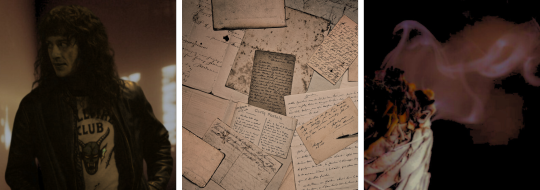
Knock, knock.
Neighbour!Eddie Munson x Neighbour!Reader
Chapter Warnings: 18+ for smut in later parts if you are under 18 you do not belong here, be gone. AFAB reader. Stress. Strong language. Nightmares. Negative self talk. Horror-esk/creepy vibes. See Masterlist for full list of warnings.
Authors note: He's finally here, in the flesh.. ish. Thank you for all the love on the last part. Officially out of the introduction and into the meat of this creepy lil story.
Find @bettyfrommars @allthingsjoeq and @somnambulic-thing full prompt list here including the one that birthed this weird little world I'm making.
6. You move into a new apartment and soon discover that you share a wall with a very noisy neighbor. Loud laughter, talking, and music are a constant companion. When you decide to go over and knock on their door to confront them in person, you find that the apartment is unoccupied and has been for months.
Reblogs and comments are much appreciated. Love you and hope you're being kind to yourself, okay bye.
Part 4: Conspiracies made through the hardwood.
The smell is nostalgic.
In every home you lived in, in your formative adult life, the introduction had been followed by the earthy smell of burning sage, whisps curling in draughty apartments and catching the light in shared dorm rooms.
Tina, your college roommate insisted on every room being scrubbed down and smudged before you unpacked.
You'd since lost touch, but you still kept the tradition of scrubbing places head to toe when you moved in and now you can't help but wonder, had you kept smudging your homes could some of the negativity in your life have been avoided.
You aren't dead.
After the momentary spiral the other night you had righted yourself from entertaining the idea.
Ghosts didn't eat, sleep, pay rent.
Go to work.
What a fucked up purgatory it would be if you had to spend eternity listening to Shona chew at her desk while desperately waiting for payday.
But it didn't stop the rattle in your bones as you'd unplugged the radio, fetched it away from the wall and fitfully slept on the couch.
You tried to explain that night away, the note was easy, a neighbour was trying to scare you, it was a prank, a bad joke.
But the radio.
You scoured the internet for hours looking for reasons as to why you had picked up what was playing on the radio next door.
It's fairly common apparently, to pick up signals from elsewhere, but you're lost in jargon.
HAM radios, the chatter of people talking over radio waves, inanimate objects picking up signals and freaking people out.
Nothing quite fits, and the rabbit hole ends in bad ghost hunting videos and advertisements for spirit boxes.
So, you call Charlie again, under the guise of fixing the faucet. The noise from next door’s not outrageous by your own relatively low standards but enough to show that next door isn't vacant.
He's exactly as he was the day you met him, with a wide smile and bright eyes, you try your best to match it, despite the dark circles hidden beneath thickly applied concealer.
He hums and haws at the pipes and you can hear humming clearly from above you as he tinkers with them.
He's chatting to you absent-mindedly about a place downtown that sells the best cubans he's ever eaten, asking if you've been to various spots around the area yet.
He's not acknowledging the noise.
Even when laughter and the TV starts he just continues on until he finally catches you staring angrily up at the scar.
“Still giving you trouble?”
He can't hear him.
You can tell by the way he phrased it, as a genuine question not a reaction to the noise.
“I thought I could maybe still hear someone in number 5?”
He chuckles. “Taking a look around spooked you huh? “
“No, just the noise.” you wave above your head, all subtlety lost in the interaction.
He doesn't even glance up.
“Honey, there's no keyhole on that door, only way someone's getting in is scaling the walls or breaking down the door.”
He pats your arm reassuringly, then moves turning the faucet on and off again as the water runs smoothly out.
“Good as new.”
You're not dead.
But maybe he is.
So, here you stand white sage and lavender burning in your hand on a Wednesday night, desperate for something to work.

Step 1. Introduce yourself.
“Hello, Eddie.”
“I'm,” You take a deep breath and let your name slip out, despite the conflicting information online as to whether it's a good idea. “and this is my apartment.”
The silence hangs for a moment. You know he's there, can hear soft distant sounds of movement.
This is so fucking stupid.
You flick through the multitudes of tabs open on your laptop.
Step 2. Acknowledge they were here first.
“I know this is your home too, and you were here first but-”
“ I'm not dead.”
The voice echoes and warps down to you and you feel your stomach roll at the sound, quickly you scroll, there isn't anything about them talking back.
“You, might not know but this apartment was split-”
There's a nervous laugh that cuts you off.
“Yeah, whatever you are, you need to leave. This is my apartment.”
You try again but can't get a word in and you can feel frustration building, rolling up your back and making your jaw clench as he talks over you.
“Look, a maintenance guy changed the locks on room 5 the other day.”
He's not listening, and you increase your volume, trying to explain, the calm and gentle candence is gone, your voice now shrill and foreign to your own ears.
“So either your fucking with me and you're somewhere else or you're the one who's dead so if you would kindly leave me the fuck alone.”
You're practically yelling now, and you almost fall from where you've scaled the kitchen counter when there's a knock at the door.
He's still yelling.
It can't be him.
You walk hunched, heart pounding, anger still coursing through you. You're not sure if you want it to be him, if he's there in the flesh then you're not losing your mind at least.
But if he is, then you're about to be faced with an irate man who's just been screaming at you through the walls.
You latch the chain, and it rattles at the force needed to open it.
A woman a good decade older than you stands arms crossed with a scowl on her face that your mother would be proud of. Behind her shoulder, a man stands with an apologetic look on his face.
You recognise them vaguely, he was one of the few who had given you a small smile as you moved in when you passed them, she had not.
“Hi? Can I-”
“I don't know what's happening in there but do you think it's acceptable to be yelling at almost 11 pm?”
She sounds like your mother too.
The urge to ask them if they can hear him is fleeting and the only response you can muster is to press your lips into a hard line.
“If it carries on I'm making a formal complaint.”
You can feel your temper still simmering and don't trust yourself with any sincere retort so merely murmur your apologies and close the door on them.
She knocks again, obviously unhappy with your lacklustre response and you can hear the man trying to reason with her as you lean your forehead against the door.
No longer yelling, the sound of him moving around remains.
The rough surface of the door is grounding as you squeeze your eyes closed.
You can't live like this.
But there's a stone in the bottom of your stomach.
The rent really was a steal, and with at least another 6 months on your lease, probation at your job still ongoing, you're going to have to.
You can't go home, not after the arguments and upheaval.
The scene you made.
People who would welcome you back were still in the group chat, talking shit after sending their well wishes. The only real person who would sincerely welcome you back lives next door to your old home and that's not happening.
You’ll exist with your undead roommate, bury the feelings down.
You're good at it, pretending that you're fine.
You just hope eventually he leaves, so you don't have to, again.

The next week is, well, loud but you reinstate the headphones and earplugs that had accompanied you in your first few days and manage.
Living for the quiet moments in between the noise, they usually come in the early evening, the low light of lamps colouring the room in fire lit hues and podcasts on the speakers instead of headphones while you cook.
A sanctuary from the surreal.
Headphones in your pocket ready.
It's the exact state you're in when you hear the raucous sounds of a group entering next door, voices overlapping and unintelligible.
“You hear that right? Uh hello?”
This is new, he never actually acknowledged you.
He calls out your name and you pull the pan from the heat, cautiously walking around the counter to where the voices are loudest.
“It's Eddie.”
“Eddie dude.”
“Shh!”
Other dead people?
Maybe the whole building's haunted you muse, reaching over to give your dinner an idle stir, heat from the metal still lingering.
“Some people want to meet you.”
That gets your full attention, and you pause for a minute unsure if you should greet more spectors into your living quarters.
Surely it couldn't get worse.
“Hey, other dead people.”
“We're not.” he grits out "You heard that right, see?”
Silence
“ Eddie man-”
“ No, don't look at me like that.”
You frown hard at the ceiling, dots connecting but in no useful way.
They can't hear you, Charlie couldn't hear him.
“Letter, letter, I have a letter!” you can hear him scramble away leaving the concerned murmuring of the others in his absence.
“Look see I'm not crazy.”
More silence
“It's a noise complaint.”
“No, well yeah, but it's from them and-”
“Dude, why don't you go stay with Wayne for a while.”
He doesn't like that.
It sets off an argument that you try to track but the movement makes their voices pitch in and out.
They just want to help.
They're worried.
Just get out of the city for a bit.
A slam of the door.
“Eddie?”
It's tentative the way you say it, the silence loud.
You're not prepared for another shouting match but the desperation that was in his voice makes your chest ache, you can't just leave it, maybe you should, but he was an echo of how you would sound had you anyone here to tell.
“Nobody can hear you either.”
“I'm not dead.” The sudden sound comes from directly above you and makes you flinch, eyes snapping up.
“Neither am I.”
His voice goes an octave higher, already defensive, diving headfirst into a ramble that you can't quite catch as he paces and, once again you find that your voice is rising to match his.
You catch yourself this time though, not about to have to explain this to your landlord if you get an actual noise complaint.
So another note to your otherworldly pen pal it is.
I've almost gotten a noise complaint, so if we can stop screaming through the ceiling to each other that would be great.
Neither of us think we're dead, nobody else can hear the other.
My apartment was split. I went round to number 5 last week and they changed the locks.
It's been empty for years.
I don't know where you are but it's not next door.
You hear the front door open and close not long after you slip the note under and settle yourself crisscross on the floor to wait.
He's quiet, only small movements audible as you run clammy palms into the carpet at your sides, fibres scratching against your fingers.
There's the sound of his door opening, then the note edges its way under your own.
The page has indents in the top corner where an empty pen has been tried, the writing fading halfway down before it changes colour.
My locks work fine.
I called the landlord to see if I needed to wait that day, he said nobody had called him and it can't have been next door because it's empty.
Sure you're not dead? No bright lights, big tunnels calling you. Fire? I don't know, tiny red dudes with pitchforks. No judgement.
Also, I'm not shouting at the ceiling. Your voice has been floating around here like an invisible stalker for almost a month now.
No judgement. Fuck this guy.
Not dead.
No lights.
No tiny men.
So what is this?
You wait with the door latched this time peeking through, as a family passes by and you make accidental eye contact with one of the parents watching as they hurry the kids past.
You close the door quickly cringing, when there's a soft crinkle underfoot, your heart stutters at the sight of the note under your feet. This can't be real.
I propose 50 questions.
A sharp breath leaves you at the words, but maybe it's not the worst idea. You need to get a handle on this, need more information because currently you're flying blind.
Okay 50 questions, how long have you lived here?
Boring. 2 years. How many eyes do you have?
You laugh but then the idea that maybe you could be dealing with something other than a human makes you feel a little ill. A ghost is bad enough.
Two. You?
You snatch the note up when it comes through.
Two eyes. So human right? Two arms, two legs, head, ass, junk between your legs?
Thank God.
So were both human. That's a relief. This is harder than I thought it would be. Who's president?
Yeah? I was kind of hoping for alien contact myself. President’s Clinton. No supernatural abilities at all?
You frown at the note.
Hillary or Bill?
The family from before return with their takeout, catching you in the hall crouched and stuffing the note under the door, you try and smile casually, it's returned but you hear the youngest kid hushed when they ask their parents what you're doing.
Great, you're going to be that person in the building.
"You have to answer the question!" He yells in a singsong tone as you close the door and the odd stares from the family in the hall are enough for you to risk shouting back.
“What year is it?”
“The games no fun if it's one sided.”
You roll your eyes climbing on top of the kitchen counter. “Eddie?”
“1993.” The huff is evident in his voice but when you don't respond he calls out almost timidly.
“What year is it there?”
“2024.”
He asks a thousand questions straight away and you spend the next hour comparing music, media and anything else you can think of. There are slight differences, no traces of shows, bands and brands he talks about, too many to pass off as just being lost to the passage of time.
You can't even find Hawkins on Google earth, Indiana he says not Texas or Wisconsin.
He's never heard of your home town either but that's not surprising unless he has a detailed map of the continental US.
You explain the concept of googling to him for a good twenty minutes when he asks how you're getting all the information and you're worried you might have broken him from the sounds he makes when you tell him that people make a living playing dnd.
Then he's gone, abruptly, cursing about having to leave and already being late, leaving you wide eyed in the middle of your apartment.
You pad toward the letters that are discarded on the floor, fingers tips running over the indents on his words.
You take your phone out, take a photo and send it to Janet.
You can see these right?

Your phone’s on your chest when you wake, your last memories are that of a concerned Janet, informing you that you could come stay any time.
You'd played it down, explained a neighbour’s playing a prank, you were just playing along.
You didn't need her worrying.
Now as you go to respond the blank screen of the phone reflects your tired face.
A sound, a drip suddenly fills the space around you.
Not again.
You reason with yourself that maybe you should just stay in bed, nothing good yet to come from actually getting up.
He always said that you were a busy body.
The noise of movement makes you peek out of your sheets, the distinct sound of walking making your bare feet hit the ground, creeping quietly towards the door trying to avoid the spots you know creak.
There's somebody there. Your heart rate quickens as you watch them leaning over the countertop, head tipped, with wild hair falling to the side they stare up at the drip, eyebrows knitted, he's leaning in hand going in to catch the next droplet.
“I wouldn't touch that,” you say on instinct, body pushing past the safety of the door.
“Jesus Christ.” he recoils backwards away from you hands outstretched.
You know that voice.
Staring at you with wide eyes, you take him in. As if this couldn't get any more fucked.
“Eddie?”
He looks wearily back at you, a confused frown settling on his face for a moment before realisation takes over.
“Holy shit.”
“So you're just in my dreams now too?”
“Your dream?”
“Yes?” you put your hands out to the side displaying the mismatched pyjamas you're in.
“Okay, if this is your dream, why have I been waking up in it?”
He crosses his arms, looking you up and down. He's fully dressed, in jeans and leather jacket and as you take another step into the room you catch the smell of him, like he's just come in from the cold.
Definitely a ghost.
“Beats me. Maybe this is where I help you pass on.” you tease and you struggle to bite back the smile at the way his nose scrunches in annoyance
“I'm not dead”
You humm looking over the room, dancing wall of light, black abyss, all still intact.
“Wait?” you turn cautiously.
“Were you the one chasing me?”
He fumbles a little, eyes wide “I wasn't chasing you.”
“The hell you weren't, I almost broke my neck falling.”
“Well, why were you running?”
You gesture wildly around yourself.
“Why wouldn't I be? Why were you chasing me!?”
“To see who it was and what the hell was going on.”
You eye him warily, how much harm can he do in a dream?
Letting out a frustrated sigh, he takes a step back from you, hands raised.
Brushing past him to the bookshelf that blocks your door, your fingers running over the spines, some titles you know others you don't and you try to take a mental note to look them up when you wake.
“So this is the future.”
He's rotating the remote control in his hands inspecting it like something’s hidden inside.
“Kind of. I guess.”
“I expected more.”
“Like what.”
“More, Sci fi shit.”
“Robots in the shop, sorry”
He tsks
“Massive TV's though.” he falls heavily down onto the couch and you can't help but laugh at his impressed expression at the 30 inch second hand TV.
You pull your phone from your pocket and throw it over to him, it lands with a soft thud beside him and he flinches away.
“Electrics seem to be dead, so there's not a lot to show while we're here.”
“What is it?”
“A phone.”
He pulls a face between impressed and confused as he inspects it closely.
You turn to the drip, blackness now sliding down and puddling on the linoleum, inching towards the darkness where your kitchen cabinets should be.
That can't be good
His head turns to watch you as you follow the scar, no signs of a drip anywhere else. Your hands smooth over where it runs down the wall.
“Don't you think we should stay away from that?” he says standing up, still keeping his distance
“Why?”
“Why? Because it looks like a cavern to the underworld,” he says incredulously.
“What do you think’s past it? The light is your apartment so there must be something past it right?”
You lean forward and he rushes towards you catching your elbow just as the darkness hisses.
You both stumble back.
“Okay yeah no that was stupid.”
“You think.”
“I'm just trying to work this out.”
You shake yourself free of his grip and turn to go to the front door, but it's blank where it should be.
Had it always been gone?
You smooth your hands over where the frame should be, no sign it has ever been there or will be.
“What's wrong? “
You push your head through the light squinting as the room comes into focus, his door sits where it should.
“Your doors here. Mines. Not.”
“Your door would be .” he waves down to the abyss.
“No my doors here it-”
Doesn't look like it should be though.
Eddie's eyes search your face.
You move through the wall quickly opening his door as Eddie scrambles behind you.
The noise is deafening, all consuming blackness and screeching static howls as you recoil away, Eddie's arm curling round you as he kicks the door closed.”
“Can you stop?” he says, taking you by the arms and turning you to face him.
“We're trapped.” your mind's racing scrambling to be awake.
His face softens.
“Until we wake up. Right? You get the whooshing?”
His arms flail around his head and you nod mutely, heart in your throat.
It's just a dream.
“So let's just attempt to not piss off the overlords of this place until then, ‘kay? Obviously we're not meant to leave.”
It's just a dream.
“So what brought you to the apparent entrance of the nether realm with me,” he asks, turning to look back at you as you enter the hallway.
He walks through the frosted glass door and you trail behind following him through dust that dances in the strips of light, you're struggling to get your breathing right, lip crushed between your teeth.
You avoid eye contact walking into his room and inspecting the models that sit on his window ledge.
“It was cheap.”
He bounces as he goes to lay back on his bed, hands scrubbing his face.
“Yeah, wonder why that was. Cursed apartment, half price.”
“Comes with a free undead roomate.” you murmur, lips quirking up despite the quiver in your voice.
He gives you a deadpan look, but he's not as subtle as he thinks he is when his hand searches his neck for his pulse.
“What about you, no roommates, pretty big place for one?”
He bristles but you're too busy pressing the point of a tiny sword into your finger to catch it.
“Yeah, uh no just me.”
“Really? How do you afford it?”
“Anyone ever told you you're nosy?”
The sudden change in tone makes your face fall, his words causing heat crawl up your neck.
“Sorry.”
You walk quickly out, leaving to the quiet sanctuary of your room and sitting on the edge of your bed.
You hate how the words crawl around your head, like you're a bother, a pain in the ass.
You make things so difficult.
He appears out the bathroom door in your peripheral, his body leaning against the frame.
“I can't afford it”
You risk a glance, chewing the inside of his cheeks he stares at your partially blocked door.
“No?”
He stands upright about to speak when his hands fly to cover his ears.
Just as the rushing starts in your own.
Bent in half looking up to you, you manage to send him a grimace and a half wave, before you're gulping air.
Everything's quiet but the blood’s still rushing in your ears, sheets a tangled mess around you as you try to steady your breathing.
At least you're awake.
Two quick knocks come from behind you.
You're frozen, any intention of trying to make yourself believe this was all your subconscious leaving you in an instant.
Hesitantly, your body moves shuffling up onto your knees and you stare at the back wall.
Your hand hovers.
Knock.
Knock.
The sound of distant traffic murmurs from outside.
A headache brews behind your eyes.
What the fuck is going on.

Next.
Tag list: @munsonburn3r @winchester-angel let me know if you would like to be added <3
#eddie munson x reader#eddie x reader#eddie munson#stranger prompts#knock knock#eddie x you#eddie munson x you#eddie munson x female reader#eddie munson x afab reader#my writing#stranger things#eddie munson fanfic#eddie munson series#Spotify
157 notes
·
View notes
Text

Today In History
Miriam Zenzi Makeba, internationally renowned singer was born near Johannesburg, South Africa, on this date March 4,1932, during a time of economic depression. Her mother, a domestic worker, was imprisoned for six months for illegally brewing beer to help make ends meet, and Miriam went to prison with her as she was just 18 days old. She grew up in Nelspruit where her father was a clerk with Shell Oil.
Makeba began her music career singing for her cousin’s band, the Cuban Brothers, but it was only when she began to sing for the Manhattan Brothers in 1954 that she began to build a reputation. She toured South Africa, Zimbabwe (former Rhodesia) and the Congo with the band until 1957. After this Makeba sang for all-women group, the Skylarks, which combined jazz and traditional African melodies. Makeba’s appearances in the films Come Back Africa (1957) and as the female lead in Todd Matshikiza’s King Kong (1959) cemented her reputation in the music industry both locally and abroad.
“Empress of African Song”
CARTER™️ Magazine
#miriam makeba#carter magazine#carter#historyandhiphop365#wherehistoryandhiphopmeet#history#cartermagazine#today in history#staywoke#blackhistory#blackhistorymonth
152 notes
·
View notes
Text
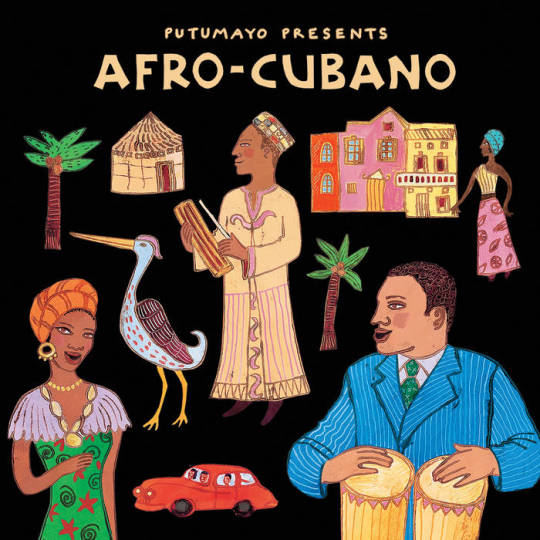
Music of African heritage in Cuba derives from the musical traditions of the many ethnic groups from different parts of West and Central Africa that were brought to Cuba as slaves between the 16th and 19th centuries. Members of some of these groups formed their own ethnic associations or cabildos, in which cultural traditions were conserved, including musical ones. Music of African heritage, along with considerable Iberian (Spanish) musical elements, forms the fulcrum of Cuban music.
Much of this music is associated with traditional African religion – Lucumi, Palo, and others – and preserves the languages formerly used in the African homelands. The music is passed on by oral tradition and is often performed in private gatherings difficult for outsiders to access. Lacking melodic instruments, the music instead features polyrhythmic percussion, voice (call-and-response), and dance. As with other musically renowned New World nations such as the United States, Brazil and Jamaica, Cuban music represents a profound African musical heritage.

Clearly, the origin of African groups in Cuba is due to the island's long history of slavery. Compared to the USA, slavery started in Cuba much earlier and continued for decades afterwards. Cuba was the last country in the Americas to abolish the importation of slaves, and the second last to free the slaves. In 1807 the British Parliament outlawed slavery, and from then on the British Navy acted to intercept Portuguese and Spanish slave ships. By 1860 the trade with Cuba was almost extinguished; the last slave ship to Cuba was in 1873. The abolition of slavery was announced by the Spanish Crown in 1880, and put into effect in 1886. Two years later, Brazil abolished slavery.
Although the exact number of slaves from each African culture will never be known, most came from one of these groups, which are listed in rough order of their cultural impact in Cuba:
The Congolese from the Congo Basin and SW Africa. Many ethnic groups were involved, all called Congos in Cuba. Their religion is called Palo. Probably the most numerous group, with a huge influence on Cuban music.
The Oyó or Yoruba from modern Nigeria, known in Cuba as Lucumí. Their religion is known as Regla de Ocha (roughly, 'the way of the spirits') and its syncretic version is known as Santería. Culturally of great significance.
The Kalabars from the Southeastern part of Nigeria and also in some part of Cameroon, whom were taken from the Bight of Biafra. These sub Igbo and Ijaw groups are known in Cuba as Carabali,and their religious organization as Abakuá. The street name for them in Cuba was Ñáñigos.
The Dahomey, from Benin. They were the Fon, known as Arará in Cuba. The Dahomeys were a powerful group who practised human sacrifice and slavery long before Europeans arrived, and allegedly even more so during the Atlantic slave trade.
Haiti immigrants to Cuba arrived at various times up to the present day. Leaving aside the French, who also came, the Africans from Haiti were a mixture of groups who usually spoke creolized French: and religion was known as vodú.
From part of modern Liberia and Côte d'Ivoire came the Gangá.
Senegambian people (Senegal, the Gambia), but including many brought from Sudan by the Arab slavers, were known by a catch-all word: Mandinga. The famous musical phrase Kikiribu Mandinga! refers to them.
Subsequent organization
The roots of most Afro-Cuban musical forms lie in the cabildos, self-organized social clubs for the African slaves, and separate cabildos for separate cultures. The cabildos were formed mainly from four groups: the Yoruba (the Lucumi in Cuba); the Congolese (Palo in Cuba); Dahomey (the Fon or Arará). Other cultures were undoubtedly present, more even than listed above, but in smaller numbers, and they did not leave such a distinctive presence.
Cabildos preserved African cultural traditions, even after the abolition of slavery in 1886. At the same time, African religions were transmitted from generation to generation throughout Cuba, Haiti, other islands and Brazil. These religions, which had a similar but not identical structure, were known as Lucumi or Regla de Ocha if they derived from the Yoruba, Palo from Central Africa, Vodú from Haiti, and so on. The term Santería was first introduced to account for the way African spirits were joined to Catholic saints, especially by people who were both baptized and initiated, and so were genuine members of both groups. Outsiders picked up the word and have tended to use it somewhat indiscriminately. It has become a kind of catch-all word, rather like salsa in music.
The ñáñigos in Cuba or Carabali in their secret Abakuá societies, were one of the most terrifying groups; even other blacks were afraid of them:
Girl, don't tell me about the ñáñigos! They were bad. The carabali was evil down to his guts. And the ñáñigos from back in the day when I was a chick, weren't like the ones today... they kept their secret, like in Africa.
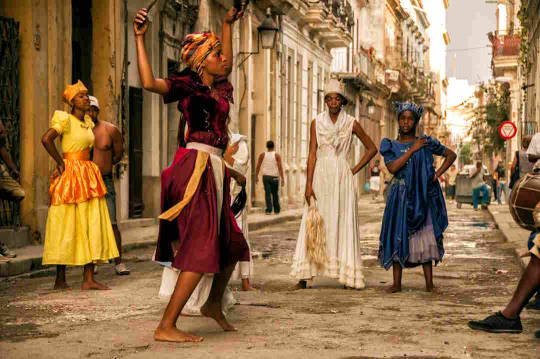
African sacred music in Cuba
All these African cultures had musical traditions, which survive erratically to the present day, not always in detail, but in the general style. The best preserved are the African polytheistic religions, where, in Cuba at least, the instruments, the language, the chants, the dances and their interpretations are quite well preserved. In few or no other American countries are the religious ceremonies conducted in the old language(s) of Africa, as they are at least in Lucumí ceremonies, though of course, back in Africa the language has moved on. What unifies all genuine forms of African music is the unity of polyrhythmic percussion, voice (call-and-response) and dance in well-defined social settings, and the absence of melodic instruments of an Arabic or European kind.
Not until after the Second World War do we find detailed printed descriptions or recordings of African sacred music in Cuba. Inside the cults, music, song, dance and ceremony were (and still are) learnt by heart by means of demonstration, including such ceremonial procedures conducted in an African language. The experiences were private to the initiated, until the work of the ethnologist Fernando Ortíz, who devoted a large part of his life to investigating the influence of African culture in Cuba. The first detailed transcription of percussion, song and chants are to be found in his great works.
There are now many recordings offering a selection of pieces in praise of, or prayers to, the orishas. Much of the ceremonial procedures are still hidden from the eyes of outsiders, though some descriptions in words exist.
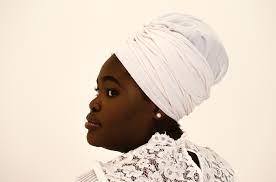

Yoruba and Congolese rituals
Main articles: Yoruba people, Lucumi religion, Kongo people, Palo (religion), and Batá
Religious traditions of African origin have survived in Cuba, and are the basis of ritual music, song and dance quite distinct from the secular music and dance. The religion of Yoruban origin is known as Lucumí or Regla de Ocha; the religion of Congolese origin is known as Palo, as in palos del monte.[11] There are also, in the Oriente region, forms of Haitian ritual together with its own instruments and music.
In Lucumi ceremonies, consecrated batá drums are played at ceremonies, and gourd ensembles called abwe. In the 1950s, a collection of Havana-area batá drummers called Santero helped bring Lucumí styles into mainstream Cuban music, while artists like Mezcla, with the lucumí singer Lázaro Ros, melded the style with other forms, including zouk.
The Congo cabildo uses yuka drums, as well as gallos (a form of song contest), makuta and mani dances. The latter is related to the Brazilian martial dance capoeira
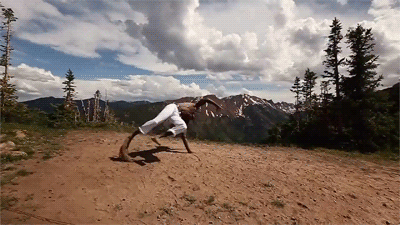
#african#afrakan#kemetic dreams#africans#brownskin#brown skin#afrakans#african culture#fitness#afrakan spirituality#afro cuban music#afro cuban#igbo#yoruba#congo#african music
150 notes
·
View notes
Text
Sumain (Summerlin) Sanki character introduction
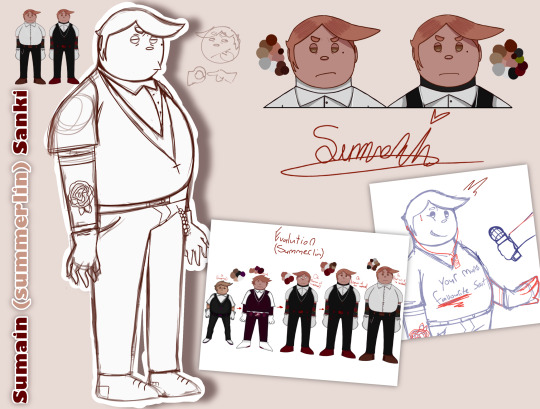
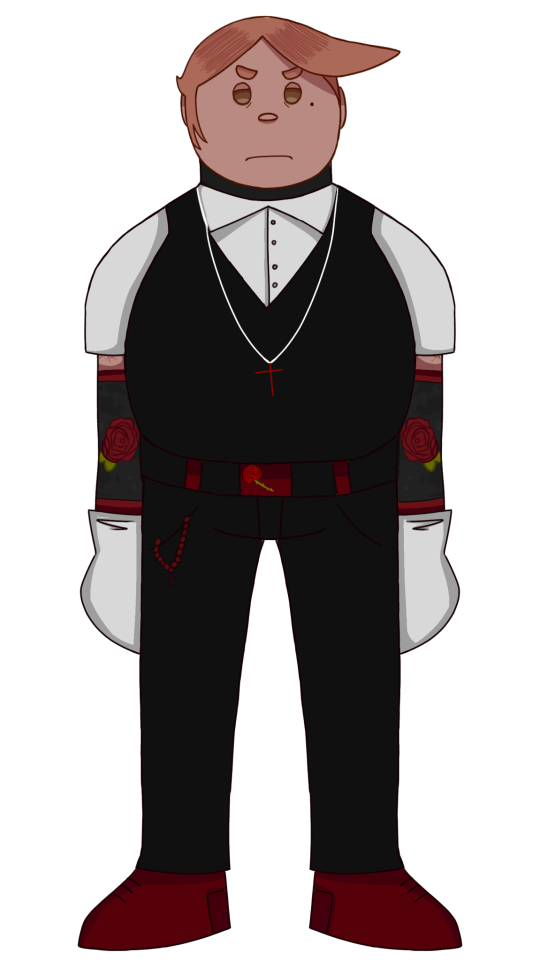

(Yes, sumain is heavily based of TeruTeru Hanamura from danganronpa as sumain USED to be a danganronpa oc (shown in the first picture with all the evaluations))
Name: Sumain (Actual first name is summerlin) Sanki
Age: 20yrs old
Height: 4,8
Weight: 200lb
Occupation: salsa dancer/salsa teacher
Likes: spicy foods, salsa dancing, collecting traditional Spanish things, non crowded places,taking care of his hair, jazz music, metal music, romance books, smoothies, teaching salsa dancing, fans, woman,
Hates: Lazy people,crowded spaces,Toxic feminists, long lines/queues, bad handwriting, people staring at him
Personality: self centred, boastful, anger issues, immature, perverted, always in denial, helpful (in salsa)
Description:
Sumain (Summerlin) Sanki is a 20 year old Spanish/Cuban Spanish salsa dancer + salsa teacher. He has abusive foster parents,he was adopted with his twin sister, Estrella to a very religious family who treated his sister way better than him. Despite his size, he’s actually very strong. He used to date Jain in college before she broke up with him. Still trying to be a ladies man, he often puts on a perverted persona to get validation or attention from woman, just to make himself feel better. His perverted persona still can’t hide the fact he has major anger issues and has a lot of agressive tensions between people and himself, often getting mad at people who look down on him or dislike him or just try to talk to him. He is very famous for his job and often fans meet him in public, not knowing about what’s happening at home or in his life. Having a lot of fans means a lot of attention from people (obviously) so Sumain is basically never left alone in public if it’s people staring or screaming at him. But he TRIES to never lose his temper (which he sometimes fails to stay calm) and not really THAT often lashes out at fans who are annoying him. But, most of the time, Sumains a charmer to his fans, especially the woman 🫣.
Love this guy sm 😝 my favourite oc I’ve ever made 🫶 I hope other people would share their opinions on him too
There’s a lot more I haven’t told you about him but I can show it in other drawings I make in this account
#oc artist#oc artwork#ocs#oc#oc art#my ocs#character art#artists on tumblr#original art#artwork#art#my art#digital art#Sumain Sanki
12 notes
·
View notes
Text
My tiny headcanon for Javier and Katey is this:
For a about a year after Katey left, Javier tries to move on with his life in Cuba but he can't get over her. The scent of her perfume, her soft blonde hair in his face and the way her hips felt in his hands still haunted him.
So his mother scrapes together the money she can, along with convincing Carlos to help send him to America to find Katey.
He shows up at the home address that she gave him just before Christmas, around the anniversary of their first meeting and Katey has just returned from her first year of college for winter break.
She is overjoyed to see him, even though she had tried to immerse herself in her studies her mind wandered to those hot Cuban nights with her body pressed against his as they let their bodies feel the music.
They spend Christmas together, Katey teaching him everything about the American traditions along the way and words he wasn't sure on. And of course dancing and kiss under a sprig of mistletoe included.
Before she returns to college for the spring semester she helps him find a apartment in her town, with the help of her parents of course. Javier finds a honest job as a mechanic at a local auto shop and every night includes a call from Katey, telling him about what she was studying.
That summer, is a summer of love for them. Reconnecting in more ways than one and on one summer night, a well saved up for ring appears. Of course Katy says yes,but only under the condition that she can finish college before they wed.
Javier isn't surprised by her request and had expected it so he had been putting away a little extra so he could move to the city where her college was so they could see each other more then just on college breaks.
That and Carlos may have wired him a little extra but it wasn’t like he didn't deserve it, finally coming around to the idea that his brother was Cuban American now.
So three years later our King and Queen of the dance floor were found owning it once more but now as Mr. and Mrs. Suarez.
#dirty dancing Havana nights#javier suarez#diego luna#katey miller#romola garai#dirty dancing#javier x katey
8 notes
·
View notes
Text
Year-End Poll #6: 1955

The sound of a decade does not change the minute the ball drops on New Year's Eve. With the benefit of hindsight, it's easier to form these cultural shifts into a narrative, even when said shifts aren't always obvious. 1955 offers us the music we've grown accustomed to over the course of this decade: traditional pop, vocal quartets, jazz standards. However, this year also gives me an opportunity to highlight some different genres that will come to shape the decade in the years to come.
The post-war 1950s saw a boom in popularity when it came to music from South and Central America. We saw this before with the inclusion of other Spanish language songs reaching the Top 30, but artists like Pérez Prado and later Ritchie Valens helped to popularize Latin music in the States. Pérez Prado is, of course, known for popularizing mambo, a Cuban genre of dance music, by incorporating big band influence. The Prado song featured on this poll is not mambo, but rather one of its descendants, cha-cha.
In 1955 year-end chart, we're seeing the first traces of a genre of music that will help define the decade's sound: rock and roll. With the inclusion of Bill Haley's Rock Around the Clock, we're seeing the first rock and roll song to top the Billboard charts. Obviously, rock and roll has existed long before Bill Haley and Pat Boone reached the top 10. Unfortunately, like many other historically Black genres, white faces typically sold better with mainstream audiences. Is this the last we'll see of record executives using white performers to market Black music to white audiences?
Foreshadowing is a literary device--
More information about this blog here
#billboard music#billboard poll#1950s music#music poll#perez prado#bill haley#mitch miller#roger williams#les baxter#bill hayes#the four aces#the mcguire sisters#pat boone#georgia gibbs
29 notes
·
View notes
Text
Heya! Welcome to our creepy studio filled with oddities!

Hi and good mourning, it’s me Aj! I’m also referred to as ShadowAj, Shady and RealShadyGhost. I’m a spooky yet silly ghost who draws and such. Here, you’ll mainly see me post fan art of my favorite series, commissions, and OC content (scroll down for more info on this!), as well as memes probably. Most of the drawings I post here will be 2D digital art, but occasionally I may post 2D traditional. I hope you enjoy your visit here!
(Small content warning, although I won’t post anything NSFW, I may post drawings with blood and/or light gore, body horror, and disturbing imagery, so beware.)
Things I Enjoy!

Ok so here I’ll just list off some of my interests so you can get to know me better. Ghosts have interests too!
- General Interests -
Spooky things, which includes horror movies and games, the occult, Halloween, urban legends, things like that.
Mysteries (I love murder mysteries, detective stories, strange and bizarre internet mysteries, and stuff like that)
Coffee (I’m a big fan)
Video Games (I’m bad at them but I still enjoy them…)
Movies (I enjoy going to theaters and watching movies, especially animated films.)
Listening to music (I am a fan of Metal/Rock (Metallica, Pantera, Ghost, etc.) music, as well as Synth. I do also listen to OSTs of my favorite series. A band I recommend checking out is ‘Dance with the Dead’, they are an indie band and mainly do horror synth and synthmetal. (Well, then again, I like any music that sounds nice or is spooky so)
Anime (Which ones? I’ll list them later give me a sec!)
Drawing (This should be obvious I mean I post drawings here but ima include it anyway)
Character Design (this is kinda an extension of drawing but I do enjoy looking at different designs and taking notes on what I can do differently with my own designs.)
Writing (Mainly my OC lore and such)
Collecting Plushies (I have an addiction help)
Theme Parks and Roller Coasters (I love roller coasters)
Cooking (I’m well known for my evil pancakes)
For aesthetics, I am a fan of spooky aesthetics (Wow!), steampunk, gothic (i love gothic architecture…), vaporwave, neon, and others.
-Anime and Games that I really enjoy-

Soul Eater
Danganronpa
Master Detective Archives: RAIN CODE
Zero Escape
AI The Somnium Files
Ace Attorney
Mob Psycho 100
JoJo’s Bizarre Adventure
Gurren Lagann
Persona (I’m a fake fan I’ve only played the P5 games and I still haven’t finished P4G)
Ghost Trick: Phantom Detective
Kaguya-sama: Love is War
Nichijou
Fire Emblem: Three Houses
Pokémon
Sonic
Chainsaw Man (Again, fake fan, I haven’t been keeping up)
And others that I didn’t list here whoopsie
Original Content!
As I said before, I’ll be posting drawings of OCs, mainly from the webcomic series I’m working on titled ‘Shadow Realm’. I do have other original series and ideas as well, so here’s a little info…
Shadow Realm

Shadow Realm is a 4-part action horror urban fantasy series starring Sophia Alvarado, a Cuban teenage girl who lives in Miami who one day ends up in a different and strange world from our own, and ends up encountering ghosts and gaining powers of electricity. With her occult and coffee-obsessed friend Violet Bellerose and a friendly ghost she meets on the other side dubbed Shady, they encounter different ghosts and supernatural occurrences all across Miami. There’s a lot more to it, but that’s the basic gist of it for now. (It gets very complicated from part 2 onward…)
Kendall Convenience
A small game project that has the player take the role of one Katrina Diaz, a convenience store worker in Miami who works the graveyard shift. This takes place in the same universe as Shadow Realm.
Mystères de Lenoir
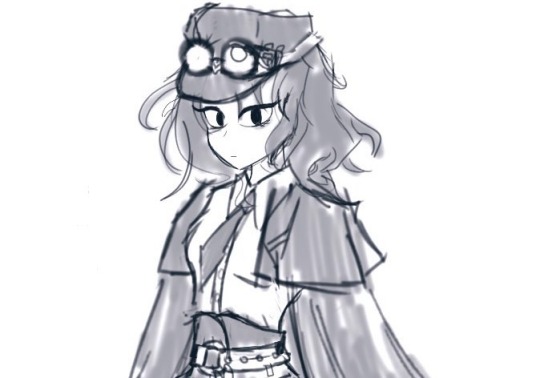
Mysteres de Lenoir is a series that follows the protagonist, Stella Auclair, a fresh detective who takes place in steampunk and gothic France during the Belle Époque era. Stella works with André Dupin, at the Dupin Detective Agency, and they solve a series of mysteries, most of which are murder cases.
I have two other series, but those are a secret for now… I will say though that one of them is a western, and the other is a single volume (One-Shot) comic.
Closing thoughts
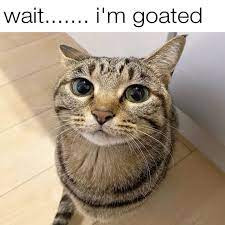
If you read through all that wow good job you’re super cool and spooky methinks perchance.
Oh yeah, you can find me on other platforms like Twitter, YouTube, Instagram, Pinterest, Pixiv, and Twitch
Even if you don’t have an account there you should still check them out!!!!
ask me anything you have questions about or if you're bored and want to talk!
another thing, i speak English and i can understand Spanish (I'm hispanic and i still can't speak this language it's embarrassing i know )
(also i may reupload this post in the future to add custom graphics, update interests, etc.)
#shadowaj#character art#artists on tumblr#halloween#digital art#danganronpa#horror#occult#oc character#spooky#idk what else to tag#see ya
14 notes
·
View notes
Text
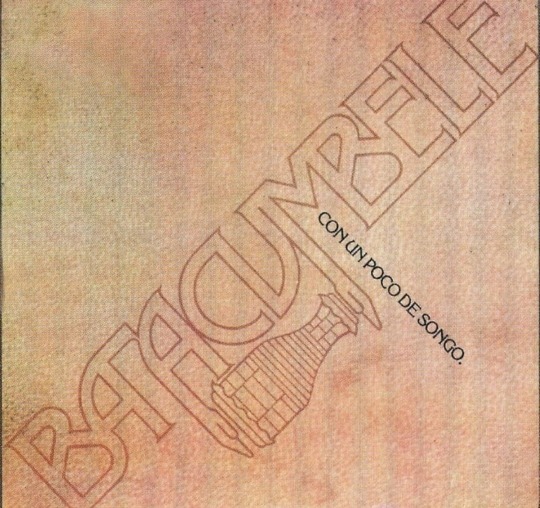
Batacumbele [meaning "to kneel before the drum" in Yoruba] was founded in 1980 in San Juan, Puerto Rico by master percussionist Angel "Cachete' Maldonado and is one of the leading Afro-Caribbean ensembles in the world. It is to contemporary Puerto Rican music what Irakere is to Cuba.
When Angel wanted to become more serious about native Puerto Rican drumming, he sought out Julio 'Caesar' Maco Rivera. There were the traditional congas, bongos, timbales, and other hand drums, but he was also introduced to the bata drums and their Yoruban sacred ceremonial rituals of Orisha. At the time the bata drum was rarely played in Puerto Rico, this being a strong Cuban influence that would permeate later thanks to Angel's introduction of these drums to a greater audience.
Angel was soon good enough to join up with Johnny El Bravo, who fronted one of the most popular dance groups on the island. By 1970, salsa was very popular. This introduced Angel to other musicians, such as Julito Collazo and Carlos 'Patato' Valdes, the Cuban drum masters who brought awareness of the bata drums to New York, where Angel relocated in the early 70s to join the salsa explosion there.
Angel also played for salsa bands La Conspiracion, Conjunto Libre, and Tipica 73, and for salsa pianist Larry Harlow. He played with Gato Barbieri for four years after being asked to join his band. He even did some gigs with Dizzy Gillespie.
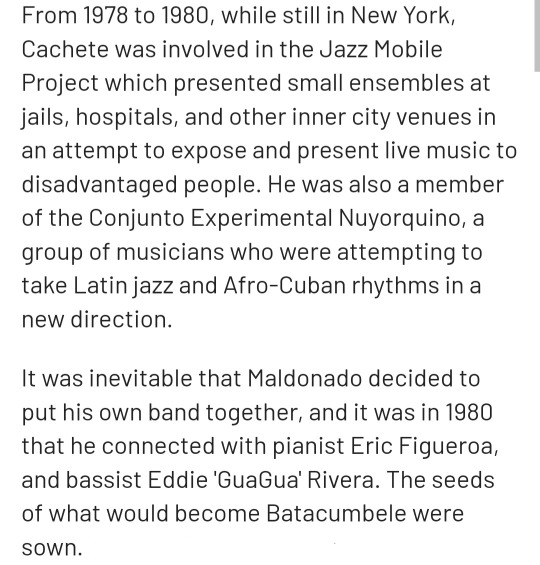



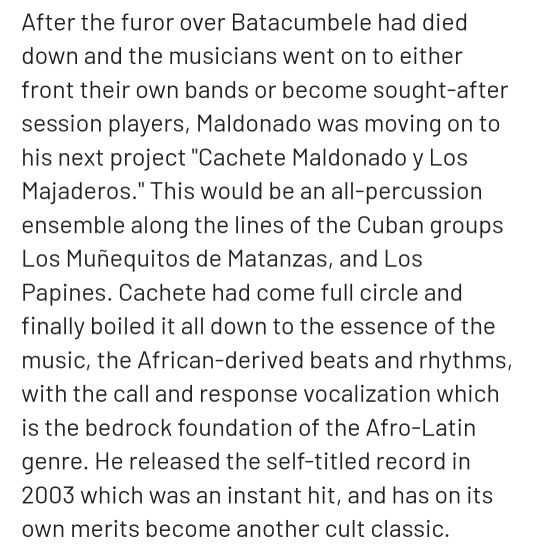
7 notes
·
View notes
Audio
schroothoop - MACADAM - for a band that makes instruments out of scrap, the music is more mellifluous than I expected, favoring international grooves over skronk
Belgian junk jazz trio schroothoop (which translates as ‘junk yard’) bring together multi-instrumentalists Rik Staelens (wind & string instruments), Timo Vantyghem (bass & thumb piano) and Margo Maex (percussion). Their new album called ‘MACADAM’ will be out April 7 via Sdban Records, home of many strongholds in the lively contemporary Belgian jazz and groove scene.
In 2020, schroothoop first emerged with their much-acclaimed and infectious debut album Klein Gevaarlijk Afval (Small Hazardous Waste). “Music on homemade instruments with a surprisingly good result” (De Standaard). “Schroothoop show that material limitation can be liberating and that sometimes the source of new sounds is just old junk.”(Written in music). “We assure you that this “scrap heap” is worth gold!“ (Le Grigri).
On their second album, to be released on April 7, schroothoop explore the vast sounds of discarded objects found on the macadam streets of Brussels. Wooden crates turn into guitars and lyres. Scrap metal becomes a thumb piano, a cimbalom, or percussion bells. Their compelling collection of semi-improvised songs is born out of several fruitful residencies and live performances during which Margo Maex, Rik Staelens and Timo Vantyghem dive deeper into the possibilities and unique timbres of their DIY instruments.
The junk jazz trio find inspiration in traditional Afro-Cuban and North-African rhythms, New Orleans second line grooves, and Arabic Hijaz scales. On Macadam, the band also explore the realms of electronic music, not shunning hints of drum and bass, dub riddims and ambient soundscapes, using pitch shifting delays or gauzy reverbs. The album delivers a mesmerizing trip through the most diverse capital of Europe, mixed and post-produced by none other than sound wizard Dijf Sanders.
The trio originally met in the Brussels street orchestra scene. One night they found themselves jamming on trash cans, buckets and other illegally dumped materials. Soon after, they started building their own DIY instruments from street trash. Imagine flutes made out of pvc pipes, a scrap metal drum kit, thumb pianos made out of old kitchen knives, a tin can violin, worn-out cutting discs as gongs, and a washtub bass. Delivering their own brand of “junk jazz”, Schroothoop literally gives junk a second life by immortalizing a whole range of lost and found objects through music. The Brussels-based group effortlessly incorporates jazz, Northern African music, and Afro-Cuban rhythms, resulting in a danceable and hypnotic trip through the city’s melting pot.
#schroothoop#jazz#junk jazz#improvised music#homemade instruments#belgium#2023#sdban records#brussels
11 notes
·
View notes
Text
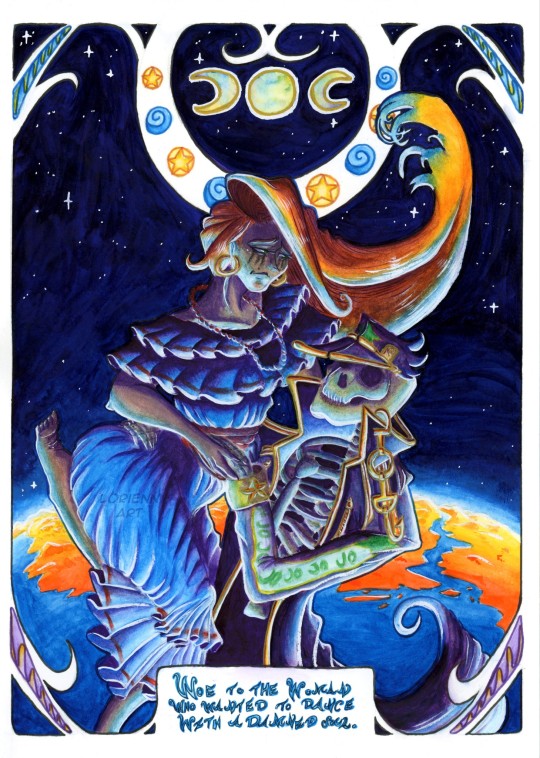
🌙 “Woe to the Woman who wanted to dance with a Damned Soul.” 🌙
FR [Danse macabre]
Heyyy !
Oui je reviens avec un nouveau dessin inspiré de Mucha ; j’ai l’impression de trouver un style de plus en plus satisfaisant pour ce genre de production ! Et visiblement, le squelette tombe à pic avec la saison spooky hehe 😌
Outre Mucha, je me suis inspirée de l’art de la danse macabre (et oui la musique de Saint-Saëns y est en partie pour quelque chose 😂). En ce qui concerne la robe de notre chère madame, j’avais tenté de représenter une robe de danseuse traditionnelle cubaine (à la base blanche et rouge) mais elle semble plus bleue qu’autre chose…
Bref, très bonne fin de saison spooky !
_ _ _ _ _ _ _ _ _ _ _ _ _ _ _ _ _ _ _ _ _ _ _ _ _ _ _ _
EN [Danse macabre]
Heyyy!
Yes I’m back with another piece inspired by Mucha; I feel that I’m more and more finding my style for this kind of production! And apparently the skeleton is still in the theme of Spooky Season hehe 😌
Apart from Mucha, I was inspired by the art of the danse macabre (and yes the music of Saint-Saëns have something to do with this 😂). Concerning the dress of our dear lady, I tried to represent the dress of a Cuban traditional dancer (initially white and red) but it seems rather blue than anything else…
Anyway, have a very good late Spooky Season!
#art#illustration#artists on tumblr#watercolour#watercolor#art nouveau#jjba#JoJo's Bizarre Adventure#jojos bizarre adventure#Jojo no Kimyou na Bouken#Jotaro Kujo#jotawife#jolyne's mom#mrs kujo#danse macabre
40 notes
·
View notes
Text
Sugar Skull AKA Maria Redesign + Hack
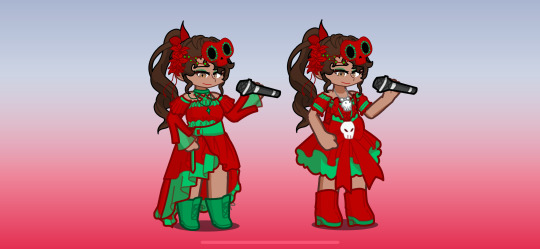
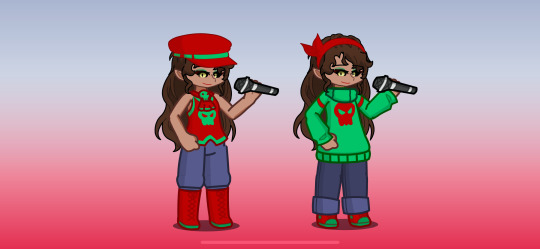
(Left design is for her concerts and awards. Right is her casual and hiding from public. The picture on the right has her natural eyes while left are contacts.)
Maria is a singer in her mid twenties who fell in love with music. She is very traditional and values elegance, trying to emphasize her Cuban heritage. She is naturally a calm person, constantly the only person trying to keep her family together.
The Hack
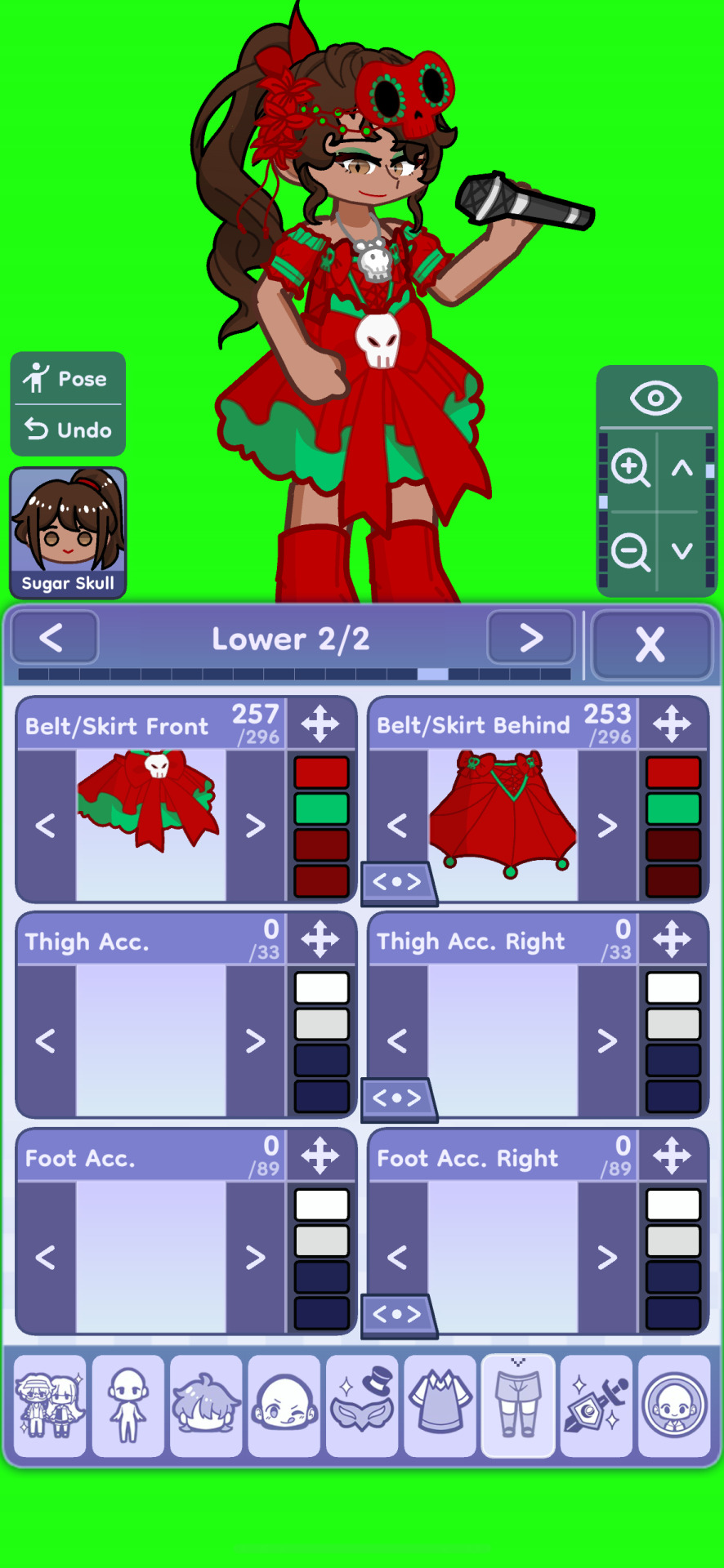
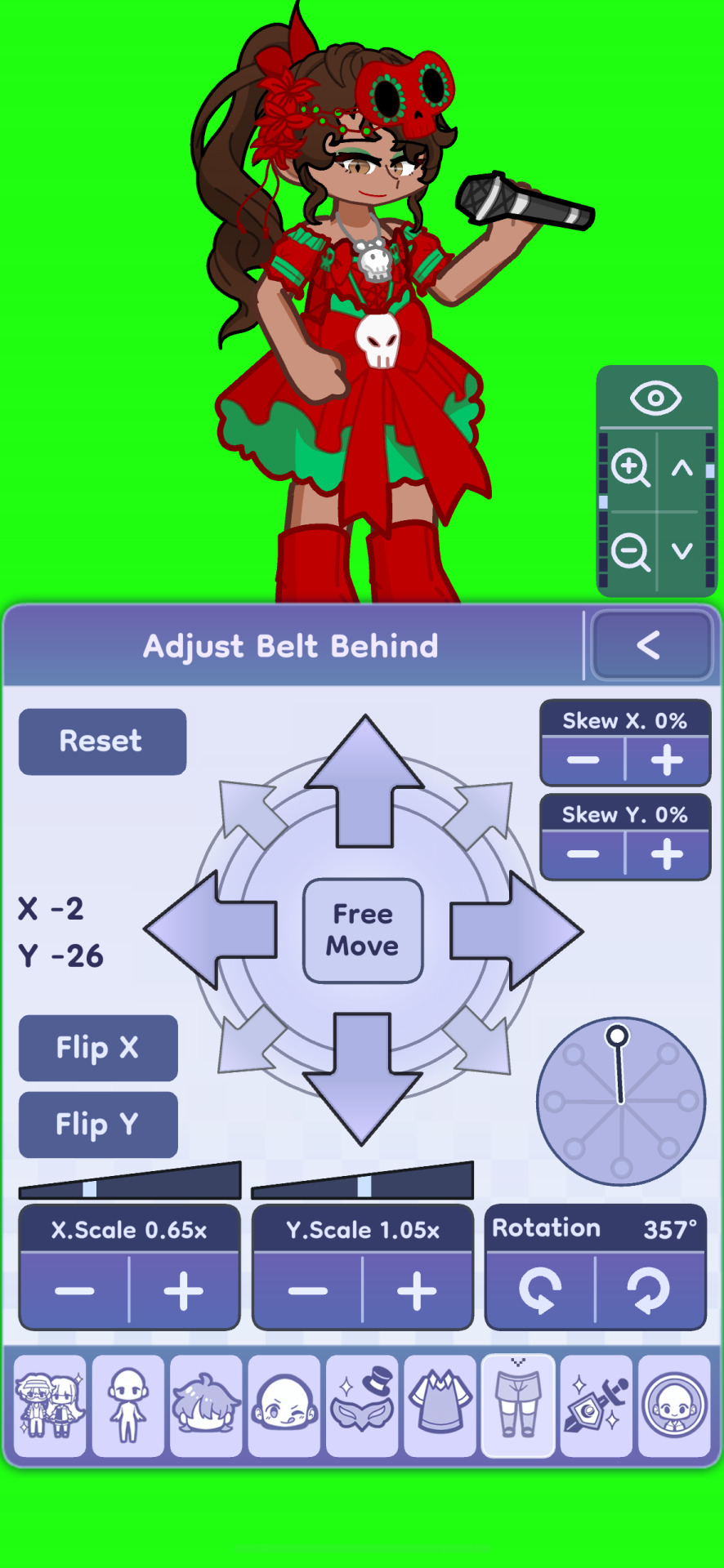
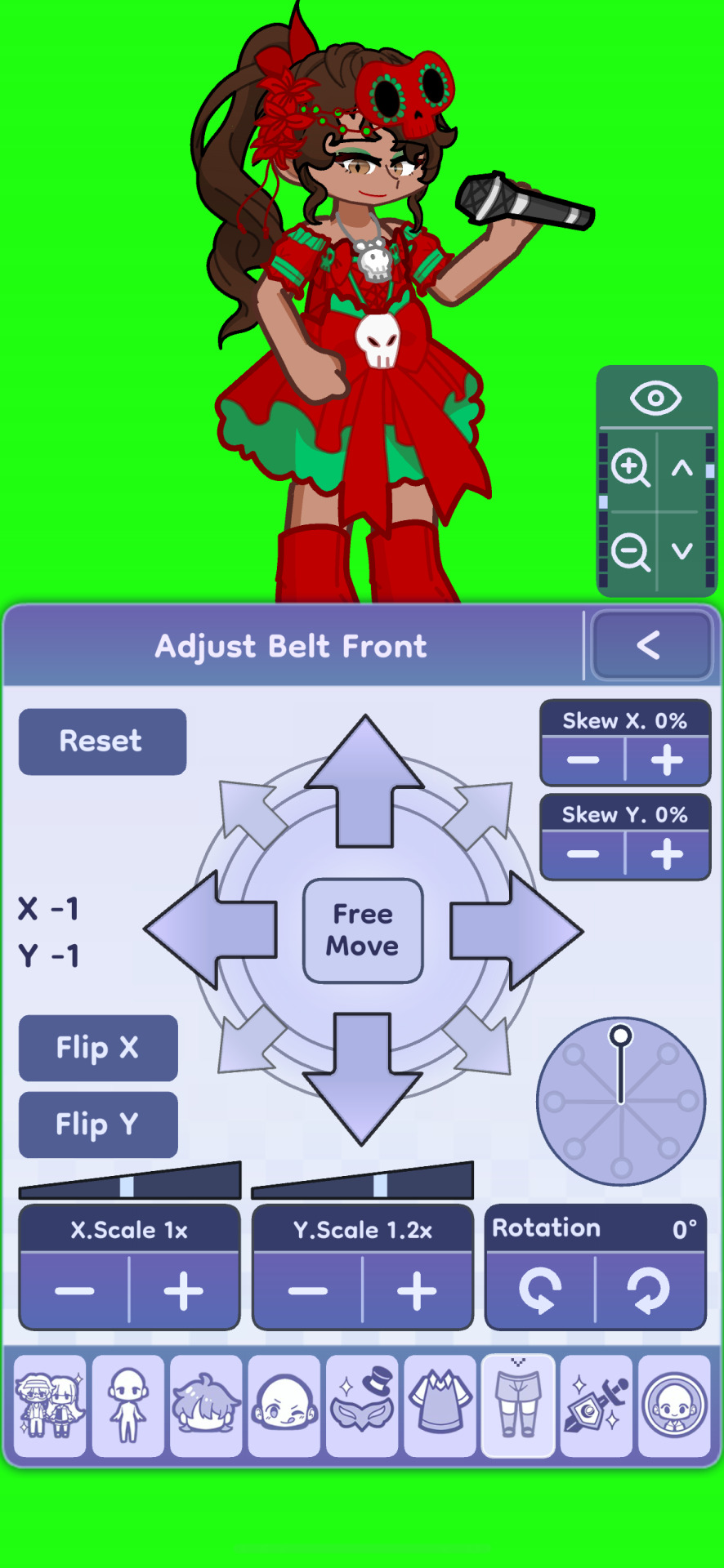
3 notes
·
View notes
Text
SACRED RATTLE THE POWER'S IN YOUR HAND.

Just like the post I did on bells a rattle is not part of traditional hoodoo but if this is the item you feel attracted to I would suggest it.
One thing that every tradition, every culture, and almost every spiritual practice on earth shares in common is the use of the Sacred Rattle. Whether the rattle is a coconut or gourd maraca, filled inside with sacred seeds, or a latticework of glass beads or cowrie shells woven into a net and covering the outside of a dried gourd, such as it is with the Shekere or the cabasa; or a stick with shells, bones or nuts tied to one end.
The rattle in its many forms and shapes is one of three man made musical instruments found in some form in every culture and country. “The others being the drum and fluits.
In many places around the world the rattle always uses by individuals of power, such as a Shaman, witch doctor or Medicine men, conjure men etc. There are times that the Maraca and Sacred Rattles were viewed by Christians as the Devil’s instrument..
The various African and Indigenous earth related spiritual and religious systems within the Americas has and to this day uses its sacred rattle. Haitian Vodou has its Asson, Cuban Santeria uses its Asheke, Dominican 21 Division uses the Tcha Tcha, and Puerto Rican Sanse uses the Amaraca, which is also called the Matraca or simply la Maraca. The Caribbean Taino Bohique and Bohitu “Chamanes / Shamans” as the Shamans in every other culture also treasured their rattle.

The Maraca (rattle) is an instrument of great power, and similar to that of a European wand, used by wiccans, pagans or other magical systems.
Used for: These rattles are used to communicate with the realm of spirits, and summon deities. They could repel or vanquish unwanted spirits, heal, bless, activate the healing properties of roots, herbs, talismans, amulets, beads and stones. Like the European Wand, the sacred rattle is an extension of the body and works as the pointing finger in which we get our desires, and will pointed and focused outwards from the body. The sacred rattles are emblems that which is used to seek that which is Holy, and it establishes a connecting link between the material world and the spiritual realm. Through the proper use of the rattle, the Shaman could manifest the presence of spirits and deities.
Sound: The Maraca or Sacred Rattle works through sound vibrations, and is always used to concentrate a sacred space, and create protective barriers. In Haitian Vodou the Asson as is the Sanse Amaraca is used to summon the Loa, the Sances or the Messengers in Christianity uses a bell to call down saints, angels etc. While at the same time they can also ward of negative earth bound spirits which often get confused or can not tolerate the sound frequency. It literally acts as a Rattlesnakes rattling. Like the snake its rattling tail lete predators or unwanted energies and vibrations know that you acknowledge their presence.
Cleansing: Along side of herbs, tobacco, blessed waters and salt the sacred rattles are used for cleansing an individuals aura. It helps the practitioners of Shamanism, Sanse and Vodou in opening up blocked energy fields and help in binding or fixing weak or torn layers of the auric layers, which helps in re-establishing energy flow known as Ashe and removing psychic dirt or unwanted energy.
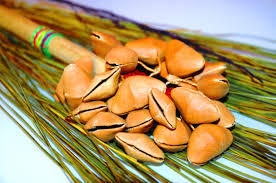
In Haitian Vodou they have a beautiful and unique sacred rattle which is unique to Haitian Vodou alone called the Asson. The Asson takes three different instruments and combines them into one. The rattle, the shekere and the altar bell.
In Sanse they don't combine the three into one, but use them separately and as I have stated often use them simultaneously.
The use of the sanctus bell is highly used in spiritual masses like Catholicism, lets all those know who have come to attend the event or church. In this case a supernatural event that's taking place before the altar. It is also rung heavily when a medium is about to mount a Loa or Spirit as a protective measure so that no earth bound or malignant force enters.
While the Rattle symbolizes the masculine phallic symbol, the bell represents the joining of both, the joining of the phallic with the yonic or vulvic “womb or vagina” to create life. The tongue or clapper of the bell is often made of two parts and symbolize the male semen and the female clitorus. (Bet you didn't know that) don't judge I read a lot) 😁
The ball part of the rattle can also be viewed as a womb, the sacred circle and earth. ”Present day Church bells derive from ancient Pagan traditions and not the other way around as most would have you believe. The bells are always rung to let those know a ceremony is to begin and when a ceremony is to end.
In traditional magic metal for bells should be iron, brass, or silver, and they are always kept on the house altars and shrines. Bells can be hung near doors on windowsills, outdoors and indoors. As the wind blows on bells and chimes it acts as a repellent for unwanted vibrations. Again sound vibrations very powerful.
Hope you enjoyed this post let me know your thoughts..
#Ritual rattle#Vodou rattle#Sound magic#Voodoo#Spiritual work#like and/or reblog!#likeandfollow#google search#Spiritual vibrations#Traditional hoodoo#Southern voodoo#Sacred rattle#follow my blog#like and subscribe#message me#ask me anything#Updated post
9 notes
·
View notes
Photo
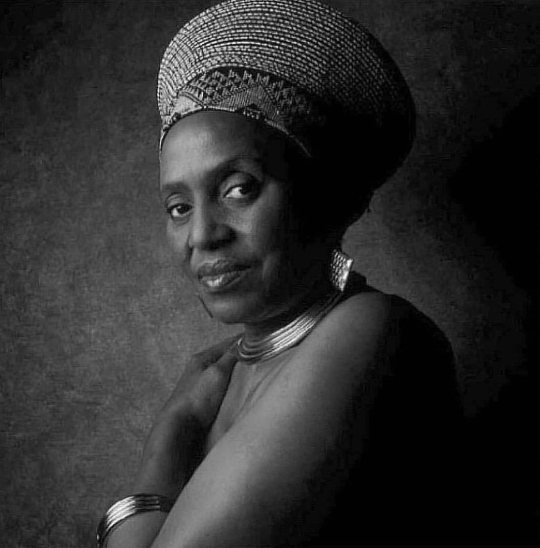
Today In History Miriam Zenzi Makeba, internationally renowned singer was born near Johannesburg, South Africa, on this date March 4,1932, during a time of economic depression. Her mother, a domestic worker, was imprisoned for six months for illegally brewing beer to help make ends meet, and Miriam went to prison with her as she was just 18 days old. She grew up in Nelspruit where her father was a clerk with Shell Oil. Makeba began her music career singing for her cousin’s band, the Cuban Brothers, but it was only when she began to sing for the Manhattan Brothers in 1954 that she began to build a reputation. She toured South Africa, Zimbabwe (former Rhodesia) and the Congo with the band until 1957. After this Makeba sang for all-women group, the Skylarks, which combined jazz and traditional African melodies. Makeba’s appearances in the films Come Back Africa (1957) and as the female lead in Todd Matshikiza’s King Kong (1959) cemented her reputation in the music industry both locally and abroad. “Empress of African Song” CARTER™️ Magazine carter-mag.com #wherehistoryandhiphopmeet #historyandhiphop365 #cartermagazine #carter #miriamzenzimakeba #womenshistorymonth #blackhistorymonth #blackhistory #history #staywoke https://www.instagram.com/p/CpXXcj3uvX7/?igshid=NGJjMDIxMWI=
#wherehistoryandhiphopmeet#historyandhiphop365#cartermagazine#carter#miriamzenzimakeba#womenshistorymonth#blackhistorymonth#blackhistory#history#staywoke
42 notes
·
View notes
Text
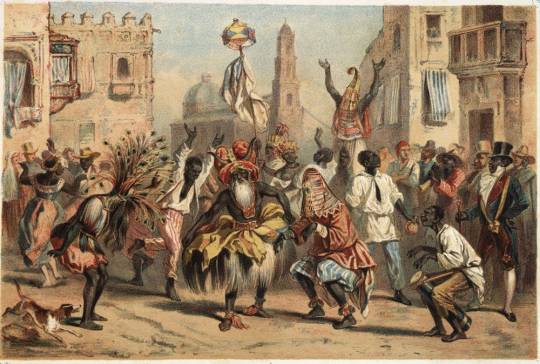
Long before it arose in New York City and became an influential style of music around the world, salsa music has its seeds in African rhythms and traditions that came to the Caribbean through the slave trade. Centuries of enslavement caused many cultural changes in Cuba, including the music that led to salsa.
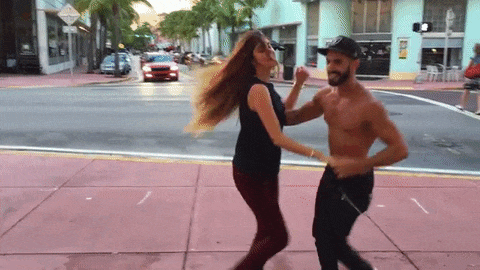
Some people know Bobby Day’s 1958 “Rockin’ Robin” or Michael Jackson’s remake but the origin of the song goes back to the days of slavery.
The majority of the Africans that were enslaved and brought to the Americas were of West African descent where the drum was used as a form of communication. In the Americas, enslaved Africans used the drum in the same way — communicating with the enslaved on distant plantations and ultimately planning uprising.
The enslavers caught wind of this and enacted a ban.
It is absolutely necessary to the safety of this Province, that all due care be taken to restrain Negroes from using or keeping of drums, which may call together or give sign or notice to one another of their wicked designs and purposes.
— Slave Code of South Carolina, Article 36
That ban went down in 1740 and soon spread throughout Colonial America.
But the beat is in the heart of the African.
We soon found other ways to imitate the sound of the drum; stomping, playing spoons, washboards, or anything other household item. We also “slapped Juba” or played “hambone” where the body became an instrument where the player slaps their thighs and chest for the drum beat. (How did young boys in 1980s Park Hill, Denver know “Hambone?”)
Although we kept the beat, we lost the tradition, a cultural marker snatched away from us.
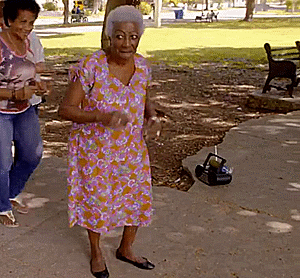
While the American enslaver worked feverishly to destroy any vestige of African culture, the Spanish enslaver of Cuba felt that it was in his best interest to allow the enslaved African to maintain his culture. In support of that, the Spanish allowed the Africans to organize Cabildos (or social groups) based on their nation of origin. Thus you had the Abakua (or Ekpe) from the nations known as Nigeria and Cameroon, the Madinga (or Malinke) from Sierre Leone, etc.
Our focus is primarily on the Lucumi, the Cabildo founded for the Yoruba of Benin and Nigeria. This lineage would be the cornerstone and origin point for what is now called “Salsa.” And what is this “Salsa?”
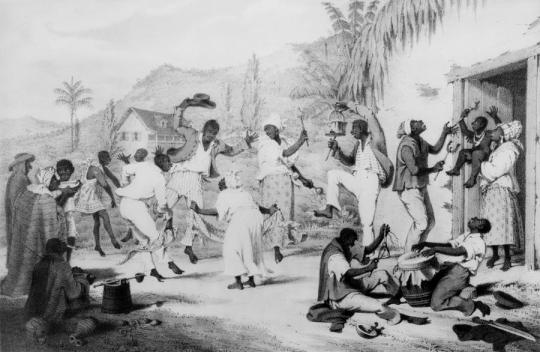
When we spoke of the drum being forbidden among the enslaved Africans in America, we forgot to mention that there was one place that didn’t enact that ban. That place was the port city of New Orleans, Louisiana — some even call New Orleans the Northernmost Caribbean city.
Similar in the way that the Spanish allowed for Cabildos in Cuba, the Louisiana enslavers permitted Sundays off and were okay with the dance and celebration so long as the enslaved African did so outside of the city limits in a place called Place des Negres (eventually known as Congo Square).
After the Civil War, Africans in America were able to get a hold of surplus brass instruments and shortly thereafter began composing music based on the popular music in the Caribbean at the time, the Cuban Habanero. Many say that this is one of the foundations of jazz music itself and the basis of the habanero, the tressilo, can be heard in second lines. Self-proclaimed jazz inventor, Jelly Roll Morton had this to say:
Now take the habanero “La Paloma”, which I transformed in New Orleans style. You leave the left hand just the same. The difference comes in the right hand — in the syncopation, which gives it an entirely different color that really changes the color from red to blue.
Now in one of my earliest tunes, “New Orleans Blues”, you can notice the Spanish tinge. In fact, if you can’t manage to put tinges of Spanish in your tunes, you will never be able to get the right seasoning, I call it, for jazz. Jelly Roll Morton
Because of those qualities, a young musical prodigy from Cuba, Mario Bauzá recognized the similarities between jazz and Cuban music straightaway. Bauzá fell in love with jazz having heard it on Cuban radio but it was his trip to Harlem, NYC in 1927 that convinced him that New York was where he wanted to be and jazz was the music that he wanted to play.
Bauzá returned to New York in 1930, immediately found work, eventually landing a gig in the Cab Calloway band. Here he brought on the legend in the making, Dizzy Gillespie, and the two became fast friends. Bauzá attempted to play his “native” music to many in the band but they dismissed it as “country” music. Gillespie, on the other hand, embraced it.
For the next eight years Bauzá played in predominately African jazz bands having seen discrimination from white Cubans. Yet he longed to start a group that incorporated the music from his home and his second love, jazz. He shot this idea to his childhood friend/brother-in-law and in 1939 at the Park Palace Ballroom the Machito Afro-Cubans would debut.
“I am Black, which means my roots are in Africa. Why should I be ashamed of that?” Bauzá said in reference to the name.
Bauzá replaced the drum kit, which at that time had only been around for 20 years, with the hard to find congas, timbales, and toms. “The timbales play the bell pattern, the congas play the supportive drum part, and the bongos improvise, simulating a lead drum”. In the 40s these drums could only be found at Simon Jou’s bakery, La Moderna, locally known in East Harlem simply as Simon’s.
Next, the Afro-Cubans needed a home and they would find that not in Harlem nor the Bronx, but instead in Midtown Manhattan, a club called the Palladium.

Salsa is a set of Afro-Caribbean rhythms fused with jazz and other styles. The truth is that its origins have always been much debated, although as a general rule it is mentioned that it comes from a fusion that came from Africa in the Caribbean when they heard European music and wanted to mix it with their drums
These origins focus especially on mambo, danzó, cha cha chá, guaracha and son montuno, later enriched with instruments such as saxophone, trumpet or trombone.
It was the Cuban exiles and those from Puerto Rico who popularized salsa in New York back in the 1950s. But it wasn't until the last third of this century that salsa dancing began to take off all over the world.
Cuba played a leading role in the origin of salsa. Already in the 1930s, melodies and rhythms from Africa were playing on the Caribbean island. Among them was the danzón, a musical piece acquired by the French who had fled Haiti.
History tells us that it was these first rhythms that were then mixed with rumbas such as guagancó and sonero to begin to create their own Afro-Cuban rhythms, including Afro-Cuban jazz, mambo, guaracha, Cuban son and montuno.
The exquisite melody of these new rhythms soon set in other Latin American countries. Puerto Rico and Colombia were the first to welcome these new sounds from the Cuban country.
However, it was not until their appearance in the United States, and more specifically in the Bronx neighborhood of New York, when these rhythms acquired a greater impact. It was the moment in which new musical instruments were added that today form an indissoluble part of salsa.
The great Cuban musicians who moved to New York along with the wave of these new rhythms created the famous tumbadoras, congas or son montuno, and were responsible for introducing trombones and guaracha.
The Origin of the Salsa Dance Steps
Once salsa was defined as a musical genre in the 1970s, the movements and steps of its dance were collected through a fusion of the African with the European.
These steps and movements of salsa fundamentally reflect the influence of the dances that the Africans brought to the Caribbean and the European dances that have been danced in Cuba since the 1930s.
So much so that the basic steps of salsa are precisely the same steps as the Cuban son, just as it also includes steps that can be seen in rumba, danzón and mambo.
The origin of these variants is in the regions where this style comes from, which are the ones that developed each dance, always under the same umbrella of the term salsa.
It is not surprising, then, that salsa is defined as the result of a series of social conditions and the evolution of a series of rhythms and melodies from Cuba, which were developed and achieved repercussion in the United States.
There are those who assure against this mixture that salsa is neither a rhythm nor a style, but rather a term that serves to represent all the music of Afro-Cuban origin that emerged in the first decades of the twentieth century.
In short, the origin of salsa has always been, and will continue to be, much discussed. American musician Tito Puente was right when he said, "Salsa doesn't exist. What they now call salsa is what I have played for many years, and this is mambo, guaracha, cha cha chá and guagancó".
#salsa#cuba#congo#nigeria#african#afrakan#kemetic dreams#brownskin#africans#afrakans#brown skin#african culture#afrakan spirituality#nigerian#nigerians#ghana#niger#cameroon#senegal#west africa#afro cuban#american#african american#african american history#american history#dance#african dance#congo dance#ekik#yoruba
11 notes
·
View notes